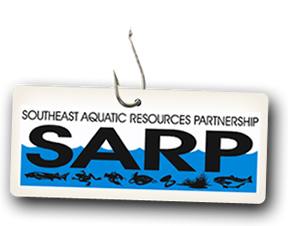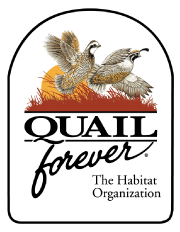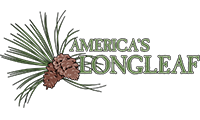General Resources and Publications
In the working lands library, you will find project reports, presentations, peer-reviewed studies, and more.
Best Management Practices For Golden-winged Warbler Habitats in the Great Lakes Region: A Guide for Land Managers and Landowners
This guide is intended to provide land managers and landowners with regional, habitat-specific strategies and techniques to begin developing and restoring habitat for Golden-winged Warblers. This document includes general information that applies to all habitat types in the Great Lakes region and should be used along with supplemental documents dedicated to the management of specific regional habitat types (deciduous forests, aspen parkland transition zone, abandoned farmlands, utility rights-of-way, forest and shrub wetlands) most important to Golden-winged Warblers.
Golden-Winged Warbler Habitat: Best Management Practices for Forestlands in Maryland and Pennsylvania
This document presents management prescriptions to forestland managers interested in providing breeding habitat for Golden-winged Warblers through management actions associated with timber harvesting.
Best Management Practices for Golden-winged Warbler Habitat in Forest and Shrub Wetlands of the Appalachians
This is a supplemental document that provides information on managing forest and shrub wetlands in the Appalachians to develop and restore habitat for Golden-winged Warblers. This guide should be used in conjunction with the Best Management Practices for Golden-winged Warbler Habitats in the Appalachian Region, which includes general information that applies to all habitat types in the Appalachian region.
Best Management Practices for Golden-winged Warbler Habitat on Utility Rights-of-way in the Appalachians
This is a supplemental document that provides information on managing utility rights-of-way in the Appalachians to develop and restore habitat for Golden-winged Warblers. This guide should be used in conjunction with the Best Management Practices for Golden-winged Warbler Habitats in the Appalachian Region, which includes general information that applies to all habitat types in the Appalachian region.
Best Management Practices for Golden-winged Warbler Habitat on Grazed Forestland and Montane Pastures in the Appalachians
This is a supplemental document that provides information on managing grazed forestland and montane pastures in the Appalachians to develop and restore habitat for Golden-winged Warblers. This guide should be used in conjunction with the Best Management Practices for Golden-winged Warbler Habitats in the Appalachian Region, which includes general information that applies to all habitat types in the Appalachian region.
Best Management Practices for Golden-winged Warbler Habitat on Abandoned Farmlands in the Appalachians
This is a supplemental document that provides information on managing abandoned farmlands in the Appalachians to develop and restore habitat for Golden-winged Warblers. This guide should be used in conjunction with the Best Management Practices for Golden-winged Warbler Habitats in the Appalachian Region, which includes general information that applies to all habitat types in the Appalachian region.
Best Management Practices for Golden-winged Warbler Habitat on Minelands in the Appalachians
This is a supplemental document that provides information on managing minelands in the Appalachians to develop and restore habitat for Golden-winged Warblers. This guide should be used in conjunction with the Best Management Practices for Golden-winged Warbler Habitats in the Appalachian Region, which includes general information that applies to all habitat types in the Appalachian region.
Best Management Practices for Golden-winged Warbler Habitat in Deciduous Forests of the Appalachians
This is a supplemental document that provides information on managing deciduous forests in the Appalachians to develop and restore habitat for Golden-winged Warblers. This guide should be used in conjunction with the Best Management Practices for Golden-winged Warbler Habitats in the Appalachian Region, which includes general information that applies to all habitat types in the Appalachian region.
Best Management Practices for Golden-winged Warbler Habitats in the Appalachian Region: A Guide for Land Managers and Landowners
This guide is intended to provide land managers and landowners with regional, habitat-specific strategies and techniques to begin developing and restoring habitat for Golden-winged Warblers. This document includes general information that applies to all habitat types in the Appalachian region and should be used along with supplemental documents dedicated to the management of specific regional habitat types (deciduous forests, minelands, abandoned farmlands, grazed forestland/montane pastures, utility rights-of-way, forest and shrub wetlands) most important to Golden-winged Warblers.
Golden-winged Warbler Status Review and Conservation Plan
The Golden-winged Warbler Status Review was initiated over a decade ago when David Buehler, John Confer, and Ron Canterbury were funded by the US Fish & Wildlife Service to elaborate on what was originally a status assessment begun by Chuck Hunter in 1999. Over time, that original project received input from others and underwent numerous stalls, revisions, and reviews. The continuous stream of new information that so rapidly outpaced the writing of the document is actually a tribute to the tremendous dedication and energy of the Golden-winged Warbler Working Group and its partners. In this version of the Status Review, survey and trend estimates have been updated to include 2009 BBS trend information. Genetic data were updated to include birds sampled during the 2010 breeding season. We are pleased finally to release the Status Review, at the same time acknowledging that new research and conservation action will just as quickly outdate much of the information it summarizes. We prefer to think of this document as a Status Transition to a more hopeful future.
Golden-winged Warbler Non-breeding Season Conservation Plan
The Golden-winged Warbler Non-breeding Season Conservation Plan (Chapter 4 of the Goldenwinged Warbler Conservation Plan) describes the non-breeding ecology of the Golden-winged Warbler and proposes concrete actions to maintain habitat throughout its stationary nonbreeding range (hereafter winter range). The plan is intended for use by conservation practitioners, land managers, and governmental agencies both in North America and Latin America. This plan provides guidance on where conservation investment in Latin America will have the greatest impact on Golden-winged Warbler habitat and recommends conservation actions to address the specific threats to habitat retention in the winter range. This plan is also intended for use at the country level for all Latin American countries within the Golden-winged Warbler winter range. For each country, this plan prioritizes areas where conservation action should begin immediately, defines five-year conservation goals, and proposes a conservation strategy to meet those goals by the year 2020.
Golden-winged Warbler Poster
This poster from the Golden-winged Warbler Working Group provides simple ways to help the Golden-winged Warbler, as well as outlines threats to Golden-winged Warblers during migration and the nonbreeding season.
647 Early Successional Habitat Management
674 Early Successional Habitat Management Job Sheet. This job sheet was modified for Bobwhite management in the Southeastern United States.


























